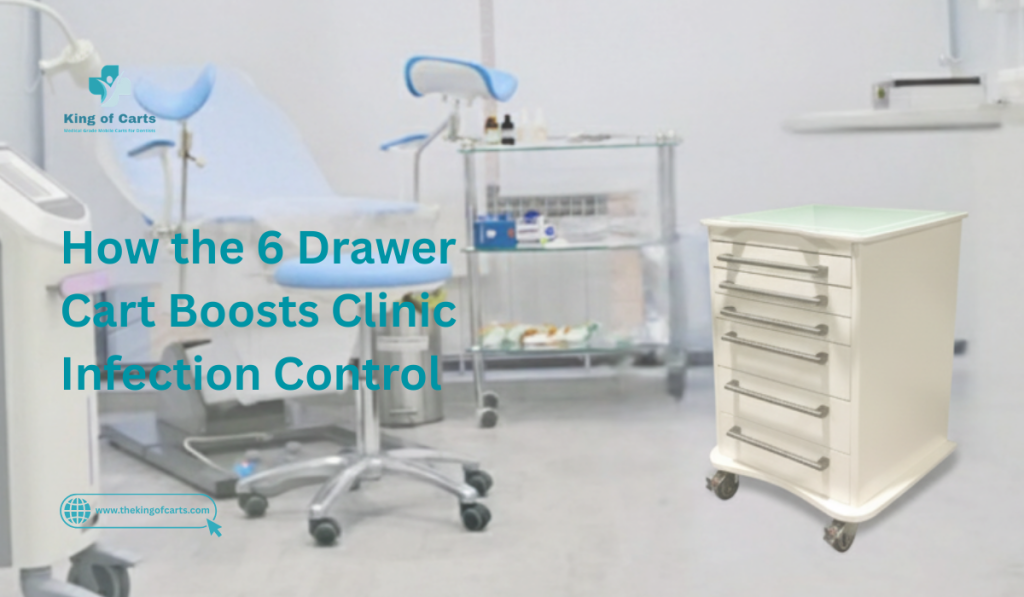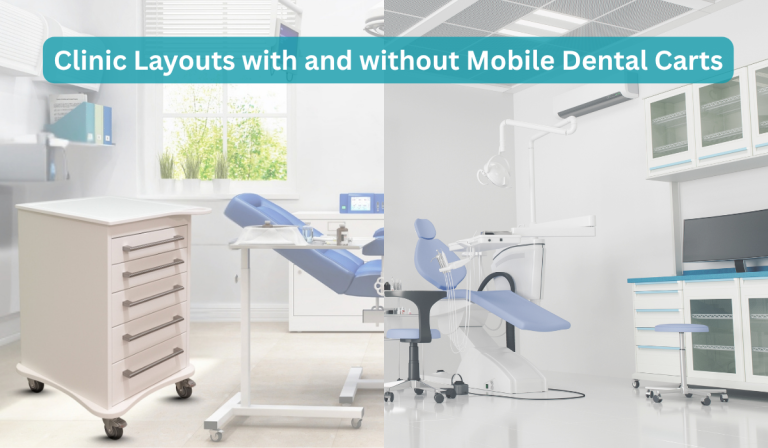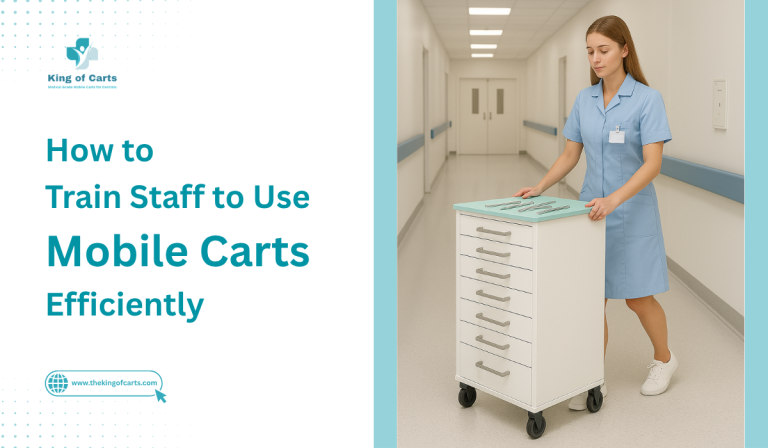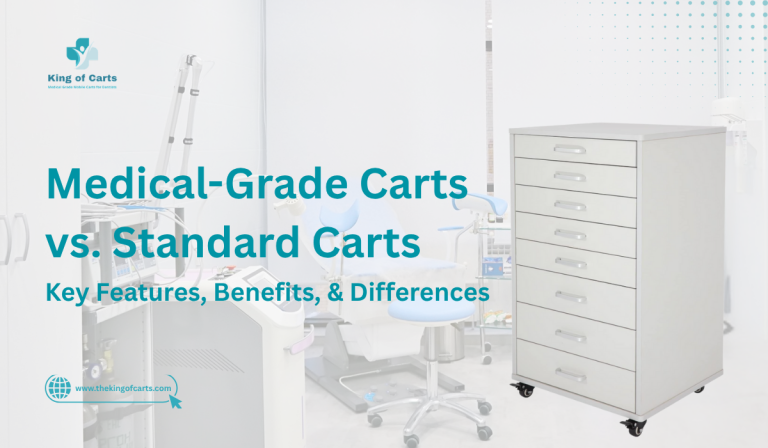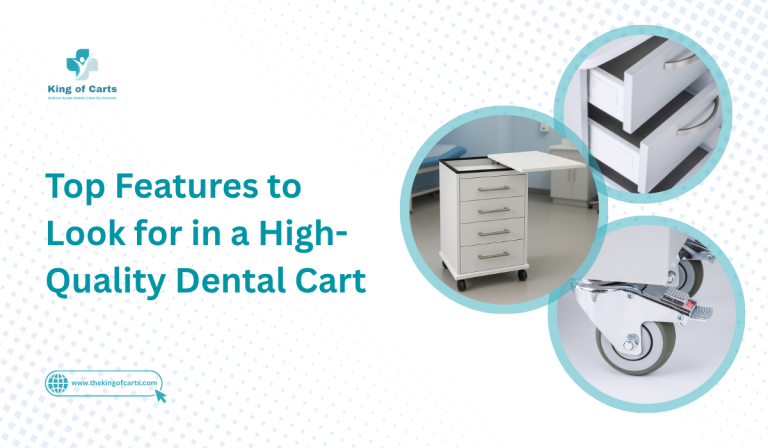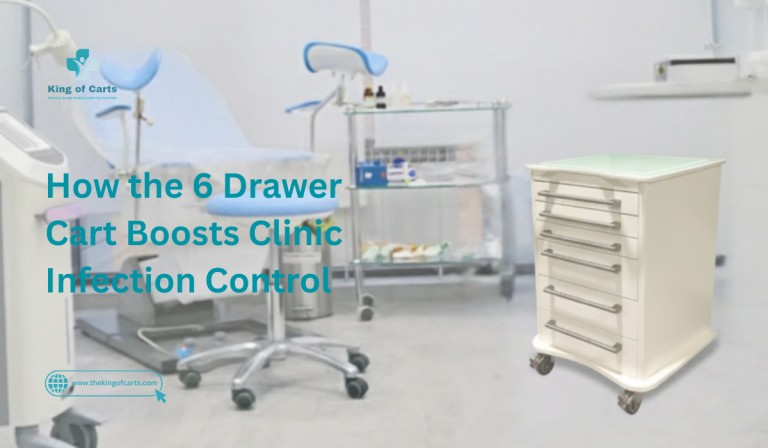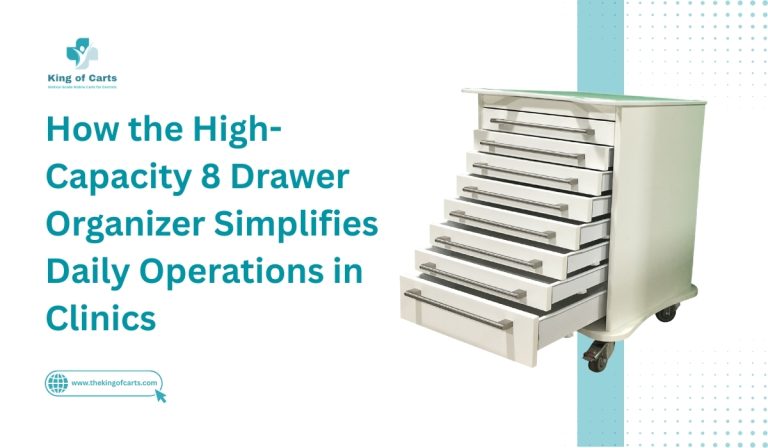In any healthcare setting, from a bustling urban hospital to a quiet suburban clinic, infection control is the bedrock of patient safety. Preventing healthcare-associated infections (HAIs) is a constant, critical challenge. While advanced sterilization techniques and strict hand hygiene protocols are vital, the equipment and furniture used in daily operations also play a significant role. The humble mobile storage cart, often overlooked, can be a powerful ally in this fight. A well-designed 6 drawer mobile cart, in particular, offers a unique combination of organization, mobility, and hygiene that directly supports robust infection control measures.
This post will explore how a 6 drawer mobile cart is more than just a storage unit; it’s a strategic tool for minimizing cross-contamination risks and enhancing operational efficiency in clinical environments. We will cover the non-negotiable importance of infection control, break down the specific features that make these carts effective, and provide practical guidance on how to integrate them into your clinic’s workflow.
Why Infection Control is Non-Negotiable
The battle against infection is a fundamental responsibility of every healthcare provider. HAIs pose a serious threat to patient outcomes, leading to longer recovery times, increased medical costs, and in severe cases, life-threatening complications. According to health authorities, on any given day, about one in 31 hospital patients has at least one healthcare-associated infection. While this statistic focuses on hospitals, the principle extends to all clinical settings, including outpatient centers, dental offices, and private practices.
Poor infection control protocols can lead to:
- Cross-Contamination: The transfer of harmful microorganisms from one person, object, or place to another. This can happen when staff move between patients, touch contaminated surfaces, or use improperly stored supplies.
- Patient Safety Risks: Compromised immune systems make many patients especially vulnerable to infections. A seemingly minor lapse in hygiene can have major consequences.
- Regulatory Penalties: Healthcare facilities must adhere to strict guidelines from bodies like the Occupational Safety and Health Administration (OSHA) and the Centers for Disease Control and Prevention (CDC). Failure to comply can result in significant fines and damage to a clinic’s reputation.
Effective infection control depends on a multi-faceted approach that includes everything from personal protective equipment (PPE) to environmental cleaning. A key component of this system is ensuring that medical supplies are stored, organized, and accessed in a way that minimizes contamination risks. This is precisely where the design of a 6 drawer mobile cart becomes so valuable.
Designed for Hygiene: Features of the 6 Drawer Mobile Cart
Not all storage solutions are created equal. A standard office filing cabinet or a set of plastic bins simply won’t suffice in a medical environment. The 6 drawer mobile cart is engineered with the specific demands of healthcare in mind. Its features are a direct response to the need for cleanliness, organization, and efficiency.
Easy-to-Clean, Non-Porous Surfaces
One of the most critical features for infection control is the material of the cart itself. Medical-grade mobile carts are typically constructed from materials like stainless steel, aluminum, or high-density polymers. These surfaces are non-porous, which means they do not have microscopic holes where bacteria, viruses, and fungi can hide and multiply.
This smooth, seamless construction allows for quick and effective cleaning and disinfection. Spills can be wiped away completely, and standard hospital-grade disinfectants can be used without damaging the cart’s finish. This prevents the buildup of biofilm—a slimy colony of bacteria that can be very difficult to remove from porous materials like wood or certain plastics.
Secure, Segregated Storage
The six-drawer configuration is ideal for implementing a systematic approach to supply management. Each drawer can be designated for a specific category of items, which is essential for preventing cross-contamination.
For example, a clinic could organize a cart as follows:
- Drawer 1: Sterile gloves and masks (PPE)
- Drawer 2: Bandages, gauze, and wound dressings
- Drawer 3: Disinfectant wipes and cleaning supplies
- Drawer 4: Phlebotomy supplies (needles, tubes, tourniquets)
- Drawer 5: Diagnostic tools (otoscope, thermometer)
- Drawer 6: Patient-specific items or overflow stock
This segregation ensures that sterile items are not stored next to potentially soiled ones and that staff can find what they need without rummaging through multiple supplies. Many carts also feature lockable drawers, providing an extra layer of security for controlled substances or high-value sterile equipment, protecting them from both theft and unauthorized access that could compromise their sterility.
Seamless Mobility and Stability
The “mobile” aspect of the cart is central to its function in infection control. High-quality casters allow the cart to be moved smoothly and quietly from the supply room to the patient examination room, and between different treatment areas. This mobility is key to an efficient workflow that minimizes contamination risks.
Instead of staff members making multiple trips back and forth to a central supply closet—increasing their foot traffic and the chances of spreading germs—they can bring all necessary supplies directly to the point of care. The cart acts as a self-contained, mobile workstation. Furthermore, quality carts have locking wheels, which ensure the cart remains stable and stationary once positioned, preventing accidental movement that could cause spills or compromise a sterile field.
How the Cart Actively Supports Infection Control
The features of the 6 drawer mobile cart translate directly into practical benefits for a clinic’s infection control program. By changing how supplies are stored and accessed, these carts help create a safer, more hygienic environment.
Reducing Contamination from Handling
Every time a medical supply is touched, there is a risk of contamination. A disorganized supply closet forces staff to search for items, often handling multiple packages before finding the right one. This repeated handling increases the opportunity for microorganism transfer.
A 6 drawer cart streamlines this process. With a designated drawer for each supply type, a healthcare worker can go directly to the correct compartment, retrieve the needed item, and close the drawer. This “one-touch” approach drastically reduces unnecessary handling of sterile supplies. The clear separation between drawers also prevents items from one category (e.g., used instruments) from accidentally coming into contact with items from another (e.g., fresh bandages).
Improving Workflow and Point-of-Care Access
Efficiency and safety are closely linked. When a procedure is underway, a clinician should not have to leave the patient’s side to retrieve a forgotten item. Doing so not only interrupts care but also requires the removal of gloves, handwashing, and re-gloving upon return—a process that is often rushed, creating opportunities for error.
By bringing a fully stocked mobile cart into the examination room, all necessary supplies are within arm’s reach. This point-of-care availability ensures that procedures can proceed smoothly without interruption. The clinician can maintain focus on the patient and the sterile field, significantly lowering the risk of a breach in protocol. The cart becomes a mobile hub, consolidating tools and supplies where they are needed most.
Facilitating Consistent Environmental Cleaning
Environmental hygiene is a cornerstone of infection prevention. All surfaces in a patient care area must be regularly cleaned and disinfected. The smooth, non-porous surfaces of a medical-grade mobile cart are designed for this. They can be quickly wiped down between patients along with the examination table, countertops, and other high-touch surfaces.
This ease of cleaning encourages compliance with disinfection protocols. When a surface is difficult to clean, it is more likely to be overlooked. The simple design of these carts removes that barrier, making it easy for staff to integrate the cart into their standard room turnover cleaning procedures. This ensures the cart itself does not become a vehicle for transmitting pathogens from one room to another.
Real-World Applications: Clinics That Benefit Most
The versatility of the 6 drawer mobile cart makes it a valuable asset in a wide range of clinical settings. Its impact on infection control and efficiency is particularly notable in environments with high patient turnover and a need for diverse supplies.
- Dental Clinics: A dental operatory requires a multitude of small instruments, disposables, and materials. A mobile cart can be stocked for specific procedures like fillings, extractions, or cleanings. This allows the dental assistant to have everything ready, reducing movement around the room and minimizing the risk of aerosol contamination spreading to a central supply area.
- Dermatology and Plastic Surgery Offices: These clinics perform numerous minor procedures that require sterile instruments, local anesthetics, and various wound care supplies. A mobile cart can be configured as a “procedure cart,” containing everything needed for a biopsy or suture removal, ensuring sterility and efficiency.
- General Practitioner and Family Medicine Offices: In a busy practice, examination rooms are used for a variety of purposes, from routine check-ups to vaccinations and minor wound care. A mobile cart can be stocked with the most commonly used supplies, reducing trips to the supply room and allowing for faster room turnover between patients.
- Urgent Care Centers: The fast-paced nature of urgent care demands rapid access to supplies for treating a wide array of conditions. Mobile carts can be organized by complaint type—for instance, a “laceration cart” or a “respiratory cart”—allowing staff to quickly grab the appropriate pre-stocked cart for the situation.
Choosing the Right Mobile Cart for Your Clinic
When selecting a 6 drawer mobile cart, it’s important to look beyond the basic configuration. Not all carts are built to the same standards, and choosing the right one is an investment in both safety and durability.
Here are a few key factors to consider:
- Material Quality and Durability: Opt for carts made of medical-grade stainless steel, aluminum, or antimicrobial polymer. Check the gauge of the steel or the thickness of the polymer to ensure it can withstand the rigors of daily use and frequent cleaning with harsh chemicals.
- Drawer Construction: Look for smooth, ball-bearing drawer slides that allow for easy and quiet operation. The drawers should extend fully to provide easy access to contents at the back. Seamless, one-piece drawer liners can also make cleaning easier.
- Caster Quality: The wheels are critical. Choose large, non-marking, rubberized casters that roll smoothly over various floor types. At least two of the wheels should have easy-to-use locking mechanisms to secure the cart in place.
- Customization and Accessories: Consider if the cart offers options for customization, such as drawer dividers, side bins for glove boxes or sharps containers, or an over-cart shelf. These accessories can further enhance organization and workflow.
- Compliance with Healthcare Standards: Ensure the cart is designed and manufactured in compliance with healthcare industry standards. This is an indicator that it has been tested for use in a clinical environment.
Conclusion
In the ongoing effort to enhance patient safety, every detail matters. The 6 drawer mobile cart is a prime example of how thoughtful equipment design can have a profound impact on infection control. By promoting organization, reducing supply handling, enabling point-of-care access, and simplifying cleaning protocols, this versatile tool helps minimize the risk of cross-contamination and HAIs. It transforms a static storage problem into a dynamic, mobile solution that supports a safer and more efficient clinical workflow.
For any clinic looking to strengthen its infection control practices, investing in a high-quality 6 drawer mobile cart is a practical and effective step forward. Ready to improve your clinic’s workflow and infection control? Explore our range of durable, medical-grade 6 drawer mobile carts designed for the demands of modern healthcare. Contact our team today for a consultation or to request more information on finding the perfect solution for your facility.
